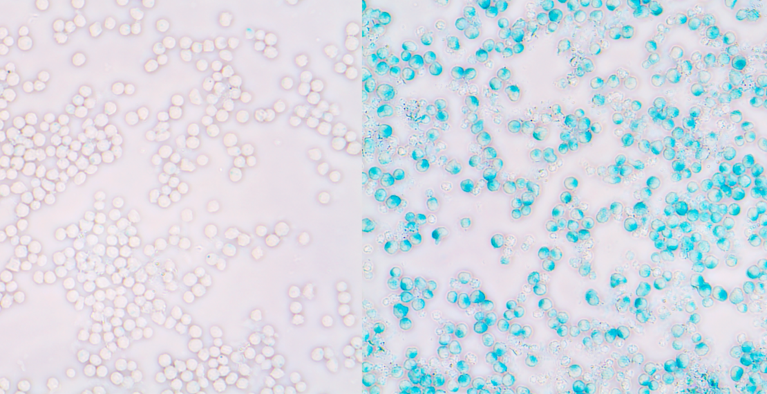A growing debate is emerging about whether cells that scientists view as being in a state of arrested growth can actually divide and produce daughter cells. These cells, known as senescent cells, have always been somewhat of a mystery to scientists. In some cases, senescent cells help wound healing by secreting protein molecules that encourage new cell growth1. At the same time, senescent cells accumulate with time and, because of their stalled state, contribute to aging; they also release inflammatory compounds that may contribute to the rise of cancers. But until recently, most scientists also believed that once a cell became senescent, there was no turning back.
A growing number of studies now suggest that senescent cells can exit their state of limbo, according to a new review published on 2 January in Nature Cell Biology2. Senescence, long thought to be an unalterable state, may actually be a highly dynamic process for cells.
“To think that a senescent cell is always going to be a permanent state and never change is old way of thinking,” says Darren Baker, a cell biologist at the Mayo Clinic in Rochester, Minnesota, commenting on the new review.
Senescent cells exist in a state that is different from that of normally operating cells. Often, senescent cells have been damaged by injury, disease or age. But, unlike undamaged cells in the body that continue to divide until death, senescent cells no longer produce daughter cells.
In the new review, researchers at the Max Delbruck Center for Molecular Medicine in Berlin describe how certain types of senescent cells seem to re-enter the cell cycle and proliferate in a way that has typically not been associated with senescent cells. “This idea of the dynamic nature of senescence is kind of provocative in various ways,” says Clemens Schmitt, a clinical oncologist and scientist at the Max Delbruck Center and an author of the review.
Certain cancerous cells can become senescent and, in doing so, put a stop to further tumor growth. As such, one strategy to stalling cancer cells involves putting tumor cells into a state of senescence. Schmitt’s work3 has found, however, that senescent cells that undergo reversal seem to have a higher potential to initiate tumor formation, in which case the strategy to send cells into senescence may need to be reconsidered. Until we have a firmer grasp on this phenomenon of senescence reversal, Schmitt says, “We need to see these reversed senescent cells as a potential risk, and we need to selectively eliminate them.”
Baker says that the same may be true for aging. “Taking these damaged cells out of their growth arrest may be dangerous,” he says, as they could produce abnormalities such as tumors.
Reversing course
Schmitt and his coauthors point to discoveries published by his team last year3,4 that revealed key proteins, including p53—which plays a role in maintaining the cell cycle—were necessary for cells not only to enter senescence, but also to maintain senescence. After being engineered by the scientists to no longer include these proteins, human melanoma cells in a dish seemed to be able to re-enter the cell cycle. Using an enzyme that attaches itself to organelles known as lysosomes, which work to break down waste, Schmitt and his colleagues were also able to observe that a cell that would be considered senescent had replicating DNA, suggesting that cell division was occurring as well as that these cells were being reprogrammed out of senescence.
“Senescence is very dynamic and very heterogeneous,” says Judith Campisi, a cell biologist at the Buck Institute for Research on Aging. “Tumor cells have many, many mutations, some of which can certainly act to reverse senescence.”
There are some who are skeptical that the changes that have been reported can be considered ‘reversal.’ “I would say that the cells are undergoing a reversal-like process,” says Goberdhan Dimri, a molecular biologist at the George Washington School of Medicine in Washington, DC. “And this is probably only in those cells that are undergoing near-senescence.”
Schmitt and his coauthor speculate that cells that have only just entered senescence, and that perhaps are not fully senescent, are most likely to exhibit a reversal. “The key remaining question is, ‘Why did nature equip cells with this ability to go into senescence and then go back?’” Schmitt says. “We need to now find out why these cells have these double and, at first sight, incompatible functions.









